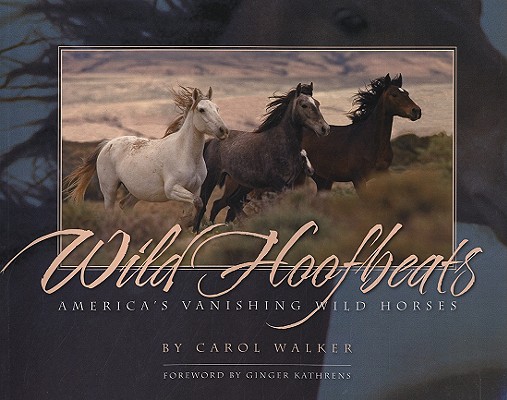Wild horses: bold, elusive, independent. Above all, free. Or are they? Most of us consider wild horses honoured emblems of our Western spirit, but some see them as a resource to exploit or even a pest to eliminate. Which are they? For Carol Walker, the photographer and author of "Wild Hoofbeats", the answer begins not in abstract argument over symbols and statistics, but with the horses themselves. In images that move fleetly from the pages straight into our hearts, Walker brings to brilliant life the horses of the Adobe Town herd in Wyoming''s Red Desert, and we gain a priceless perspective on these graceful, courageous animals. Walker gathered these dynamic images over years spent observing (sometimes at a distance, often within a mere stride or two) the bands of the Adobe Town herd. She emerged from her experience with a sense of personal acquaintance with the horses, a deep respect for their social allegiances and intelligence and a heart fully engaged by their plight. As art, the photographs are elegant. As documentary, they are evocative. In every respect, they are indelibly memorable. But Walker doesn''t offer just photographs. In quiet, spare prose Walker invites us to journey with her as she meets the horses in the initial blur of mass impression, then band by band, and eventually, individual by individual. We come to recognise each stallion and note as the seasons pass the new battle scars, the special attention each gives to a favourite mare. We understand which mare is tender, which is a disciplinarian with her baby. And of course, we grow attached to the youngsters, first as curious foals, finally as adults venturing into perilous independence. In the final chapters, Walker takes us on the roundup done by the Bureau of Land Management to control herd population, and we hold our breath. Which ones return home to their family bands, and which are separated forever? Ultimately, we are as invested in these horses as if they are our own. So travel with Carol Walker through "Wild Hoofbeats", savour every painterly image and every poignant story, but beware: you cannot venture through this book and emerge unchanged.
Get Wild Hoofbeats by at the best price and quality guranteed only at Werezi Africa largest book ecommerce store. The book was published by Painted Hills Publishing and it has pages. Enjoy Shopping Best Offers & Deals on books Online from Werezi - Receive at your doorstep - Fast Delivery - Secure mode of Payment
 Jacket, Women
Jacket, Women
 Woolend Jacket
Woolend Jacket
 Western denim
Western denim
 Mini Dresss
Mini Dresss
 Jacket, Women
Jacket, Women
 Woolend Jacket
Woolend Jacket
 Western denim
Western denim
 Mini Dresss
Mini Dresss
 Jacket, Women
Jacket, Women
 Woolend Jacket
Woolend Jacket
 Western denim
Western denim
 Mini Dresss
Mini Dresss
 Jacket, Women
Jacket, Women
 Woolend Jacket
Woolend Jacket
 Western denim
Western denim
 Mini Dresss
Mini Dresss
 Jacket, Women
Jacket, Women
 Woolend Jacket
Woolend Jacket
 Western denim
Western denim
 Mini Dresss
Mini Dresss






























































